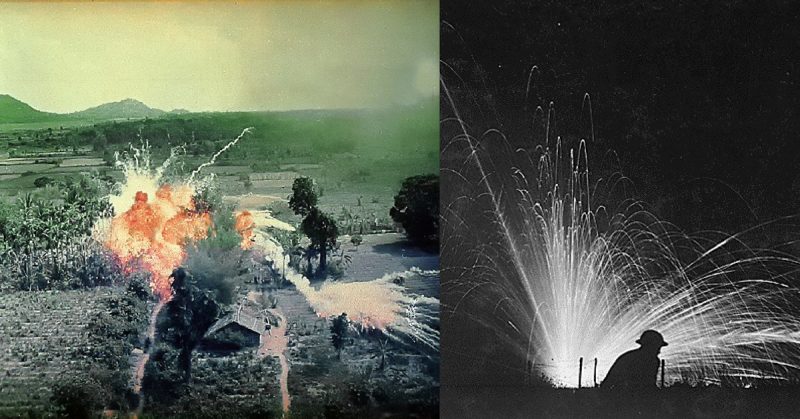Fire has played a devastating part in the history of war. Even when not weaponized, it could be unleashed during pillaging of towns, leading to their destruction. When turned into a tool of military might, it became one of the most terrifying sights upon the field of battle.
1. Greek Fire
Few weapons throughout history have gained such a mythical status as Greek fire. Its composition remains a mystery centuries after its recipe was lost.
The most significant use of Greek fire came in 672 AD. A vast Arab fleet, motivated by the recently unleashed ideology of Islam, reached the gates of Constantinople. As the heart of Eastern Christianity and last bastion of the Roman Empire, Constantinople was a hugely important city, but it looked set to be overwhelmed.
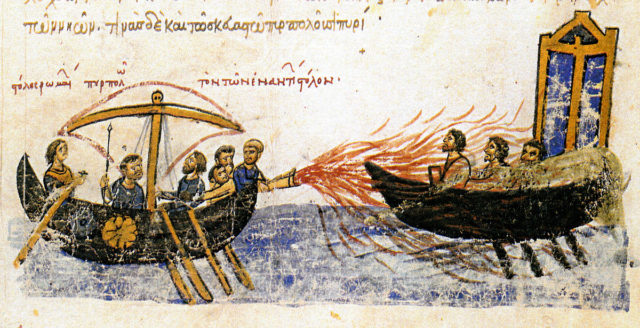
Roman ships sailed out of the harbor, ready to face the invaders. The leading ships were elaborately decorated in keeping with the tone of the empire, their prows carrying gilded images of animals.
Rather surprisingly, liquid spouted from the mouths of these animals coating the Arab fleet then bursting into flames. Unable to put out the fires, the surviving Arabs turned and fled. Constantinople had been saved.
Greek fire gave the Byzantines a huge advantage, and they kept its recipe a closely guarded secret. With the advent of gunpowder, that recipe disappeared and remains a mystery. Modern scholars believe that it was probably a combination of quicklime, which becomes scorching in contact with water, and a highly flammable liquid. On contact with the sea, the quicklime heated up, igniting the fluid, which was lighter than water and so stayed both afloat and burning despite attempts to put it out.
In the days before modern weapons technology, the psychological effect of such a weapon was as devastating as its physical effect.
2. Naphtha
Centuries later, Christian crusaders came under attack from Muslims by weapons they believed must be Greek fire. The chronicler Jean of Joinville wrote about a barrel-sized container with a tail of fire which was launched from a catapult and exploded in a burst of flames when it landed. The legend of Greek fire was well known so he assumed it to be this.
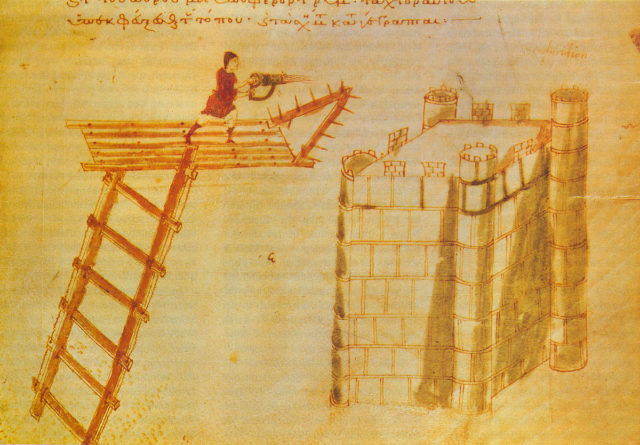
In reality, Muslim forces fighting against the Crusaders did not have the recipe for Greek fire – the Byzantines had made sure of that. Rather, this was a barrel containing a sort of naphtha – a generic term for petrol, coal, and natural gas derivatives. A fuse was lit before firing so it acted like a giant Molotov cocktail, the liquid igniting as it burst out across the fuse.
3. Thermite
Modern incendiary weapons began with thermite, used by the Germans in the First World War. A combination of aluminum and ferric oxide, better known as rust, its innocuous components combined into a deadly fuel. Bound up in resinous material and tarred rope, thermite bombs were dropped on British cities by German zeppelins in some of the earliest air raids.
By the Second World War, thermite bombs had advanced. The Germans combined them with magnesium to form two-pound bombs that would burn more fiercely if it was attempted to put them out with water.
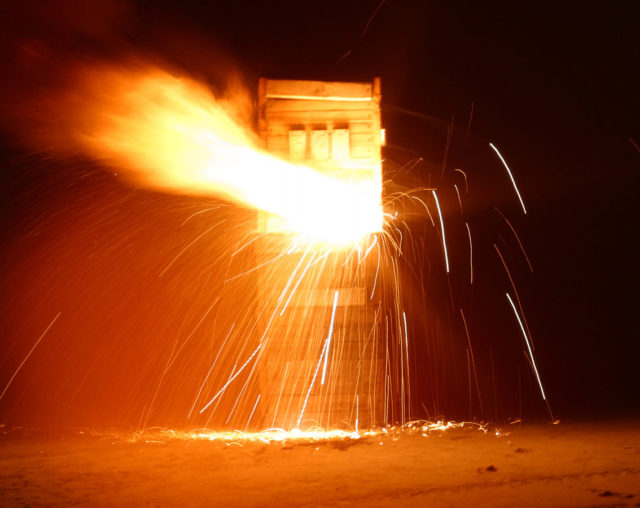
The British replied with their versions included a parachuting bomb. When it landed it launched seven individual thermite charges over ten minutes, even as the original bomb burned. The devastation was therefore scattered over a wider area.
4. Napalm
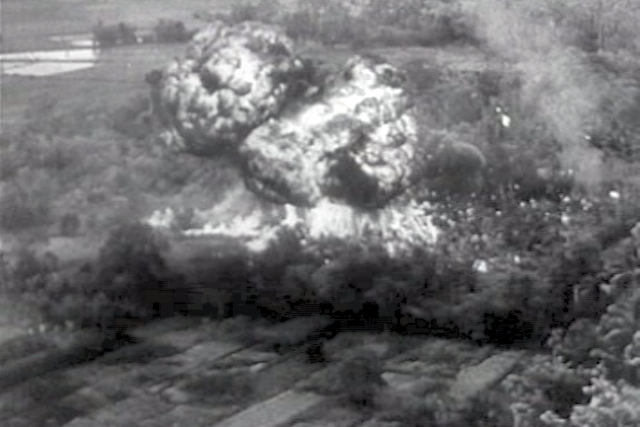
The other prominent incendiary weapon of World War Two was Napalm. An intensely burning jelly it was produced by combining gasoline with two types of soap – aluminum naphthenate and aluminum palmate. Clinging to anything it touched, this combination burned fiercely.
The USA used napalm in the firebombs dropped on Japan, which destroyed 16 square miles of Yokohama and Tokyo in a single night – the most devastating firestorm in history. Even before the atomic bomb, cities were being leveled.
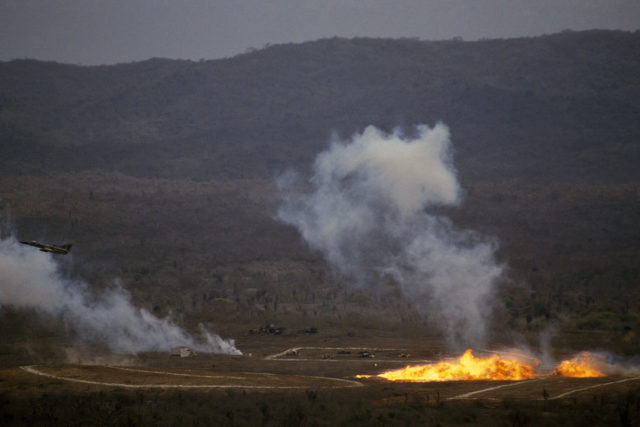
Napalm was also used by the Americans in flamethrowers during the Second World War. Its thickness created a narrower stream than liquid so could be ricocheted around corners, reaching otherwise inaccessible targets. Though not yet having its later infamy, the word napalm was already associated with horrifying injuries and terrible deaths.
5. Napalm B
The substance that made napalm infamous was a later version, napalm B. This was made from benzene, gasoline, and polystyrene. Unlike the original napalm, it was a liquid rather than a gel. It was also said to be far more destructive, burning for three times as long.
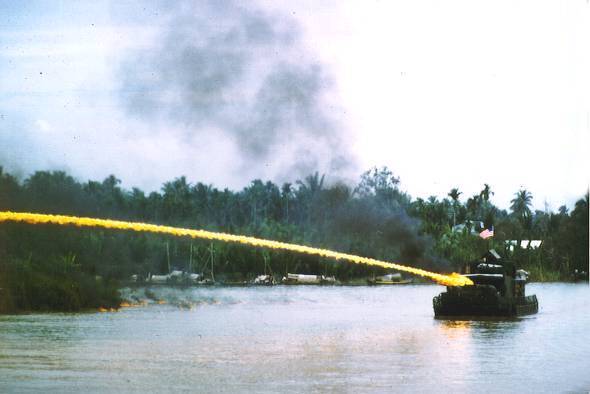
This version became the basis for modern napalm weapons, such as those used by the United States in Vietnam. Again deployed in both bombs and flamethrowers, it could level entire stretches of jungle, wiping out enemy hiding places, or be used in direct attacks on defensive positions.
This was an era when the tools of war were being questioned. Napalm’s devastating effects were broadcast into people’s homes. It became a byword for the evils of military technology, causing PR problems for the company producing it.
6. White Phosphorous
Self-igniting in the air, burning intensely and producing large amounts of smoke, white phosphorus is an obvious weapon of war. Like thermite, it has been used in artillery shells to create incendiary effects. It can also be used to create smokescreens, through shells, bombs, or grenades.
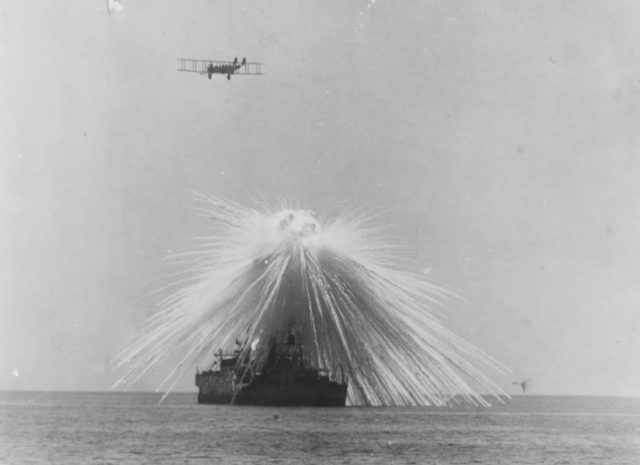
While tracer bullets, in general, have incendiary potential, white phosphorous has been used in specific incendiary bullets, such as the British “Buckingham bullets”. A small amount of white phosphorous in the nose turned them into incendiary rounds that could be useful against aircraft and other targets vulnerable to fire.
7. Depleted Uranium
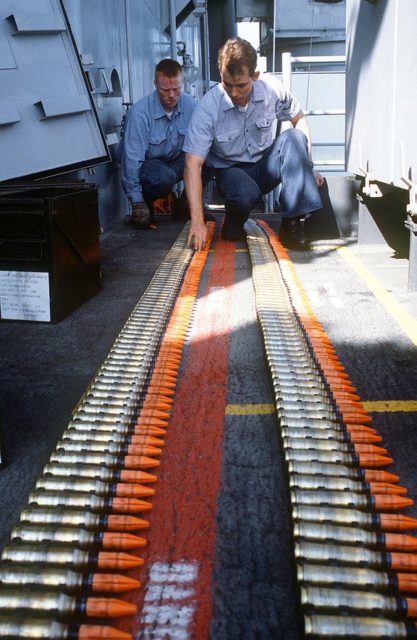
Right up to the modern day, other weapons can also be used as incendiaries. Depleted uranium shells, the sometimes controversial armour-piercing ammunition of the modern battlefield, are successful in part because of their inflammatory effect. When they strike a hard surface, they give off extremely hot sparks. So when they hit the armor of a tank, they have a chance of igniting the gasoline vapor inside.
Source:
William Weir (2006), 50 Weapons that Changed Warfare.
